How to Play and Use Double Stops on Guitar
Double stops are a great way to introduce some interesting sounds in your songwriting and your lead playing. In this article we’ll dive into what they are and how you can use them.
What Are Double Stops on Guitar?
“Open strings” are strings that are not held down.
A “stopped string” on a stringed instrument is when a string is held down.
A double stop is when two strings are held down simultaneously.
Common Double Stops You Already Know
The most common double stop on the guitar is the power chord - taking a root and a fifth.
Here are some examples of power chords on guitar:

Other use double stops we can play on guitar
However, there are more double stops we can use. Let’s look at a few more interesting double stops we can use:
The third
Double stops of a third can have either the major third or minor third.
Here are some examples of both:

The fourth
The fourth is quite simple to play. It is commonly thought of as an inverted power chord:

What Is An Inverted Chord?
In general, an inverted chord is any chord whose bass note (the lowest note in the chord) is not the root note.
For example, if we have a chord of C major, with the notes C E G, and when we played the chord on guitar the lowest note was C, we would say the chord is in its “root position”, the root note being the lowest note.
If we changed how we played the chord, so that the lowest note was now E, the chord would be inverted. In this case, it would specifically be the first inversion. This is commonly written as C/E.
Getting Back to Power Chords…
If you are playing a G5 power chord, you are playing the notes G and D.
If you play a D4th double stop, you have the notes D and G - the same as for the G5, but with the D in the bass of the chord.
So we could say that we are playing an inverted G5 power chord.
Augmented Fourth / Diminished Fifth
This double stop has two different names. Which name is correct will depend on the music theory context, or the harmony, that is occurring in the music at that point in time.
Here are some examples of how we can play it:

This double stop can work nicely as a work nicely as a passing chord, for playing over a diminished harmony or for using over altered dominant chords. It can sound a little harsh, but, you may enjoy that effect.
The sixth
The sixth is a bit like a stretchy power chord. It is quite possible to play on guitar:

This interval would commonly be used when playing over a first inversion major or minor chord.
Why is the sixth commonly used for first inversion major / minor chords?
Let’s go back to our example of a C major chord, containing the notes C, E and G.
In first inversion, we have: E C G
You may notice that the distance from the bass note, to the root note (from E to C) is a sixth.
As a side note, this is why in figured / through bass, first inversion chords are denoted by a 6, e.g. I6, IV6 etc.
Other intervals
The two remaining intervals, the second and seventh, are very dissonant.
Here are some examples anyway, for completeness / curiosity:
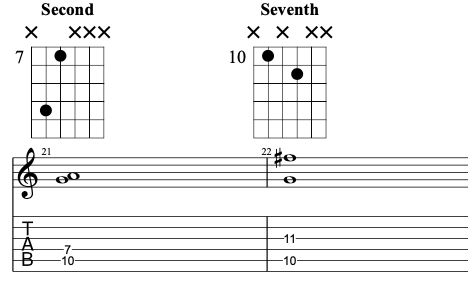
When playing tonal music there isn’t much use for these intervals. However, they are another tool in the box should you want to use them.
Using Double Stops in Your Guitar Playing
Now that we understand what double stops are, let’s look at two different ways that we can use them, in writing riffs and also in lead guitar playing. The uses are slightly different, so we’ll look at examples for both.
Using double stops to write riffs
When writing music, whether its instrumental music or music for vocals, double stops can be a great way to add new sounds to your riffs.
Let’s look at an example of just two simple ways we can use these double stops for writing riffs.
We’ll also look at a little music theory to explain what triads are available to use.
Say you had a riff that was built from the following power chords:
G5A5F5G5
Here are the power chords written out for guitar:

As an example, let’s say the riff looks something like this:
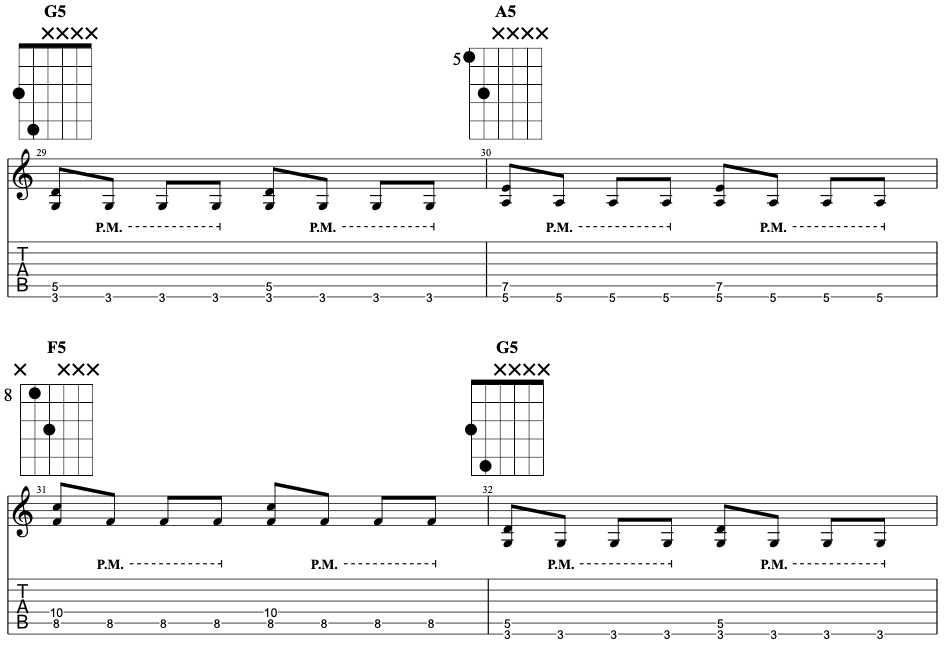
Next, we’ll look at how we can use some music theory to transform the riff with some different double stops.
If we take the harmonised major scale for the key of A minor:
Am B˚ C Dm Em F G
Two approaches we could take to creating a variation on the above riff is to either:
- Replace the power chords with major / minor triad double stops
- Incorporate major / minor third double stops alongside the triads
Replace the power chords with triad double stops
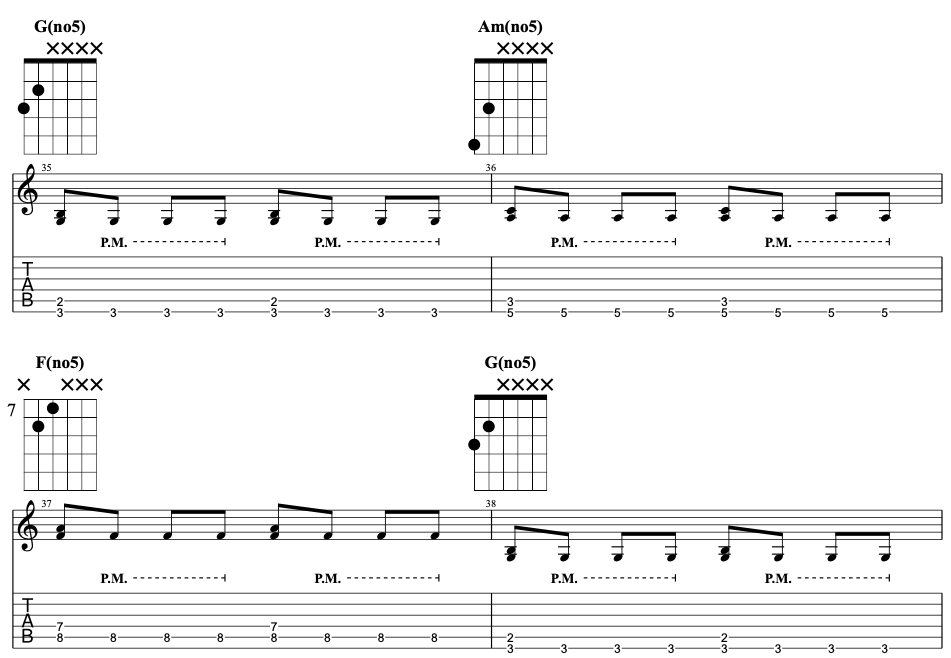
Use triad double stops with the power chords
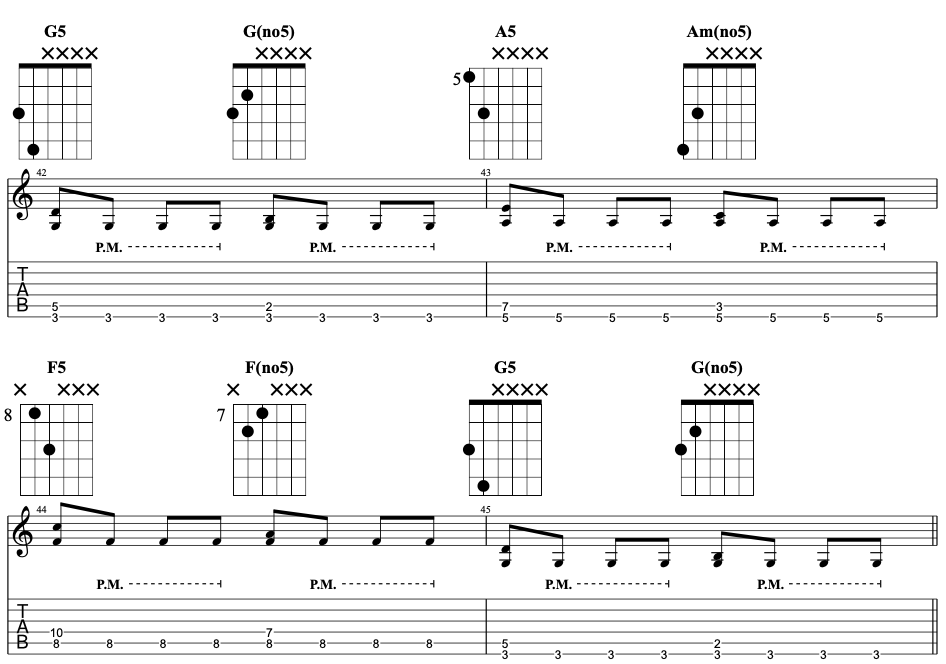
We can repeat this with the other intervals. The general principle is to substitute power chords / add to power chords using intervals from the appropriate chord in the harmonised scale. This is one example of how understanding music theory can help with the creative process.
Using Double Stops in Lead Guitar Playing
Another area we can look at using double stops is in lead playing.
If we take the first position of the minor pentatonic scale (you can read a complete guide to the minor pentatonic scale on guitar here):

When we use double stops in this context, we are going to hold down two notes from the scale at once.
Don’t worry too much about exactly what interval you are playing here, anything from the minor pentatonic scale over a minor backing track is probably going to work!
Here are a couple of lick examples:
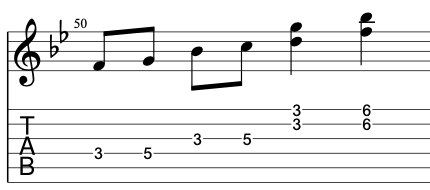
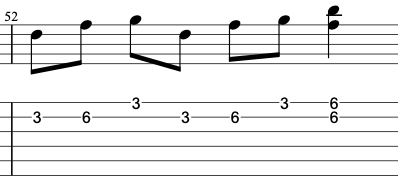
Using the two notes per string patterns, I tend to find that hold down either the first note on a string in each pattern, or the second note on a string in each pattern, works quite nicely, which is what we did in the above licks.
When playing this licks, try adding a vibrato using either your fingers or the whammy arm. You can get some tips on improving your guitar vibrato here.
A cool effect with double stops in the minor pentatonic scale is to hold down a double stop and then bend the lower string. Here are a couple of examples to demonstrate this concept:
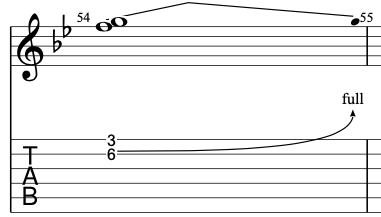
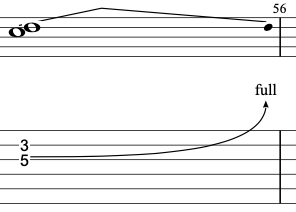
In the above two examples we are bending from an inverted seventh (or a second) into a unison. It has a very dramatic sound!
Using double stops from the minor pentatonic scale like this can be really fun when improvising.
Have a go at using these double stop string bends in your improvising, or try writing some licks of your own with them.
If you check out the course Rock Guitar Improvisation For Beginners you’ll get some in depth lessons on how to apply double stops to your lead playing and improvisational skills.
Conclusion
Double stops are a great way to add some fire to your songwriting and your lead guitar playing. Have a play around with the ideas in this article and have some fun with them!